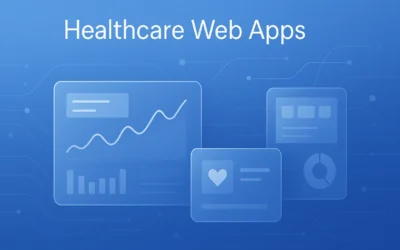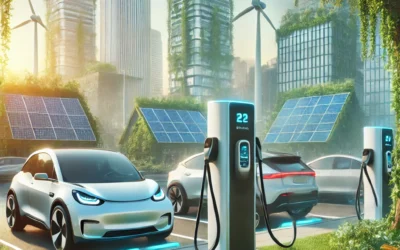Key Takeaways:
- Utility companies and electricity providers play distinct roles in the energy sector.
- Consumers have options when it comes to choosing their electricity sources.
- Understanding the roles and functions of each can help in making informed decisions.
Table of Contents:
- Introduction
- Roles and Functions
- Primary Differences
- Consumer Implications
- Choosing the Right Provider
- Future Trends in the Energy Market
- Final Thoughts
Introduction
Two key players often emerge in discussions in the energy sector: utility companies and electricity providers. While it might be easy to confuse the two, they serve fundamentally different functions. Customers may save money and make better choices regarding their energy sources by being aware of these distinctions. Exploring utility vs electricity provider roles in the energy landscape is helpful to better understand the distinction.
Utility companies are responsible for the infrastructure that transports electricity, while electricity providers focus on selling electricity to end users. Together, they ensure that homes and businesses receive reliable power at competitive rates. This article will explore the differences, roles, and consumer implications, helping you understand how these entities impact your daily life and financial decisions.
Roles and Functions
Utility companies are your go-to for the physical infrastructure that delivers electricity to your home or business. They own and maintain the power lines, transformers, and substations essential for electricity distribution. Their primary goal is ensuring that electricity reaches you safely and reliably, a task that requires constant maintenance and upgrading of the network. Utility companies also handle emergency repairs and service interruptions, ensuring minimal downtime and maximum convenience for end users.
Electricity providers are the entities you pay for your electrical usage. They buy power from generators and sell it to you, offering a variety of plans and rates. These companies don’t handle the physical delivery of electricity; instead, they focus on billing, customer service, and, often, energy efficiency programs. They also engage in competitive practices, providing offers and discounts to attract and retain customers. By understanding the differences in these roles, consumers can make more informed choices that better suit their needs.
Primary Differences
Scope of Responsibilities
The most apparent difference between utility companies and electricity providers lies in their range of responsibilities. Utility companies deal with the ‘delivery’ side, ensuring the electricity reaches your home. These companies are usually regulated and often have a monopoly in their region. They are subject to governmental oversight to ensure reliability, safety, and fair pricing. Electricity providers, however, function in a competitive market, offering consumers different plans and rates.
Another significant difference is the level of innovation and flexibility each company can offer. Utility companies emphasize maintaining and improving infrastructure, which can be slow and costly. In contrast, electricity providers are more agile. They can quickly adapt to market demands by offering renewable energy options, bundled services, and promotional rates designed to attract a broader customer base.
Consumer Implications
The understanding of these roles leads to important consumer implications. Knowing that utility companies promise dependable supply, particularly in extreme weather, might ease one’s mind. However, electricity providers can offer various plans, including fixed-rate or variable-rate plans, renewable energy options, and promotional rates, potentially leading to significant savings. Consumers should evaluate these options according to their energy consumption patterns and financial goals. For example, a fixed-rate plan offers price stability and peace of mind against market fluctuations. In contrast, a variable-rate plan might be more suitable for those managing risk for potentially lower costs.
Additionally, some electricity providers offer green energy plans that let consumers opt for a portion or all of their energy from renewable sources like solar or wind. This generates long-term savings and benefits the environment as renewable energy solutions become more widely available and efficient.
Choosing the Right Provider
When selecting the right electricity provider, several factors come into play. You need to consider cost, contract terms, and customer service quality. Comparative shopping is crucial; websites and tools often provide the necessary information to make an informed choice. The U.S. government’s energy-saving tips can be an excellent place to start. Reviews and ratings are also valuable resources, so take the time to read what other consumers have to say about their experiences with different providers.
Furthermore, consumers should review the contract terms carefully. Some providers may offer low introductory rates that increase after a specific period, while others may have early termination fees. Understanding these terms can save consumers from unexpected costs down the line. Additionally, engaging with customer service—either through reviews or personally—can provide insights into the company’s responsiveness and reliability, which are essential factors when choosing a long-term electricity provider.
Future Trends in the Energy Market
The energy market’s landscape is continually evolving. Technological advancements like smart grids and the increasing adoption of renewable energy sources are significant trends. These innovations affect utility companies and electricity providers by introducing new challenges and opportunities. Smart grids enable more efficient distribution and can help quickly restore power after outages. Meanwhile, adopting renewable energy is making power generation cleaner and more sustainable.
Furthermore, advances in battery storage technology are making it easier for renewable energy sources to provide consistent power, even when the sun isn’t shining or the wind isn’t blowing. As these technologies become more prevalent, utility companies and electricity providers must adapt their business models. Consumers can expect even more choices and tailored services, making it essential to stay informed about market developments.
Final Thoughts
Understanding the differences between utility companies and electricity providers is critical to making informed decisions about your energy consumption. Both entities play essential roles in ensuring that electricity gets to your home and that you have options in terms of pricing and plans. By monitoring future trends and doing thorough research, consumers can optimize their energy use and save on costs.

































